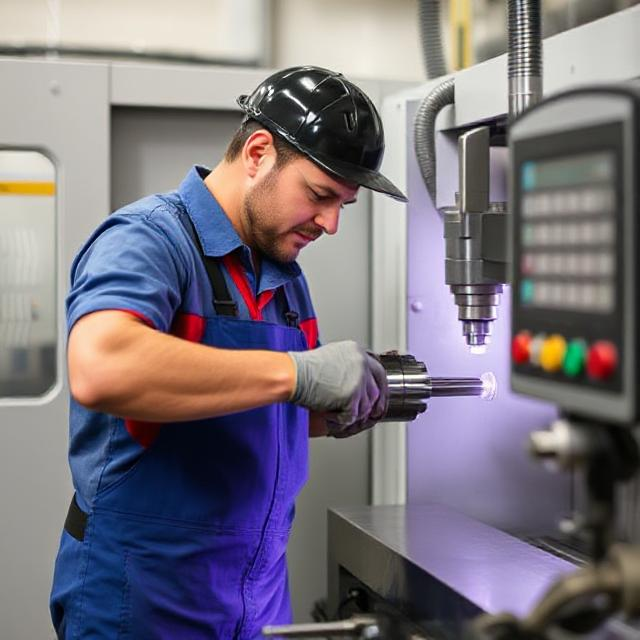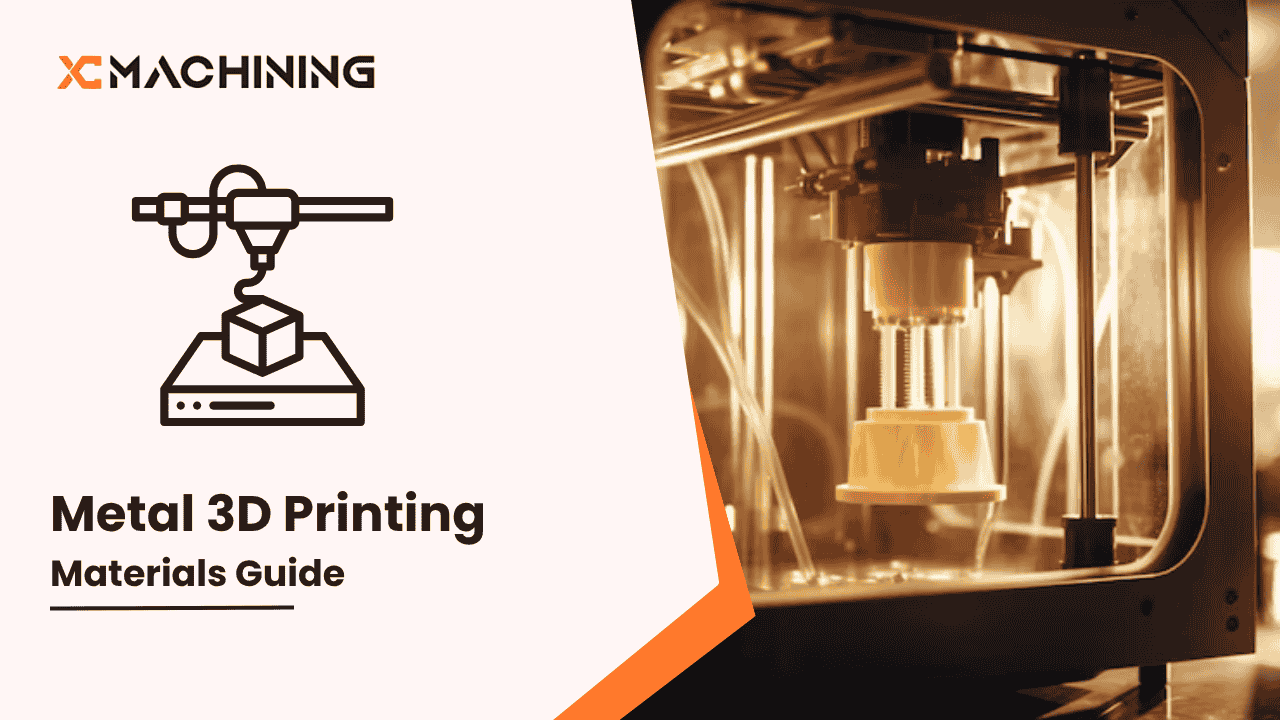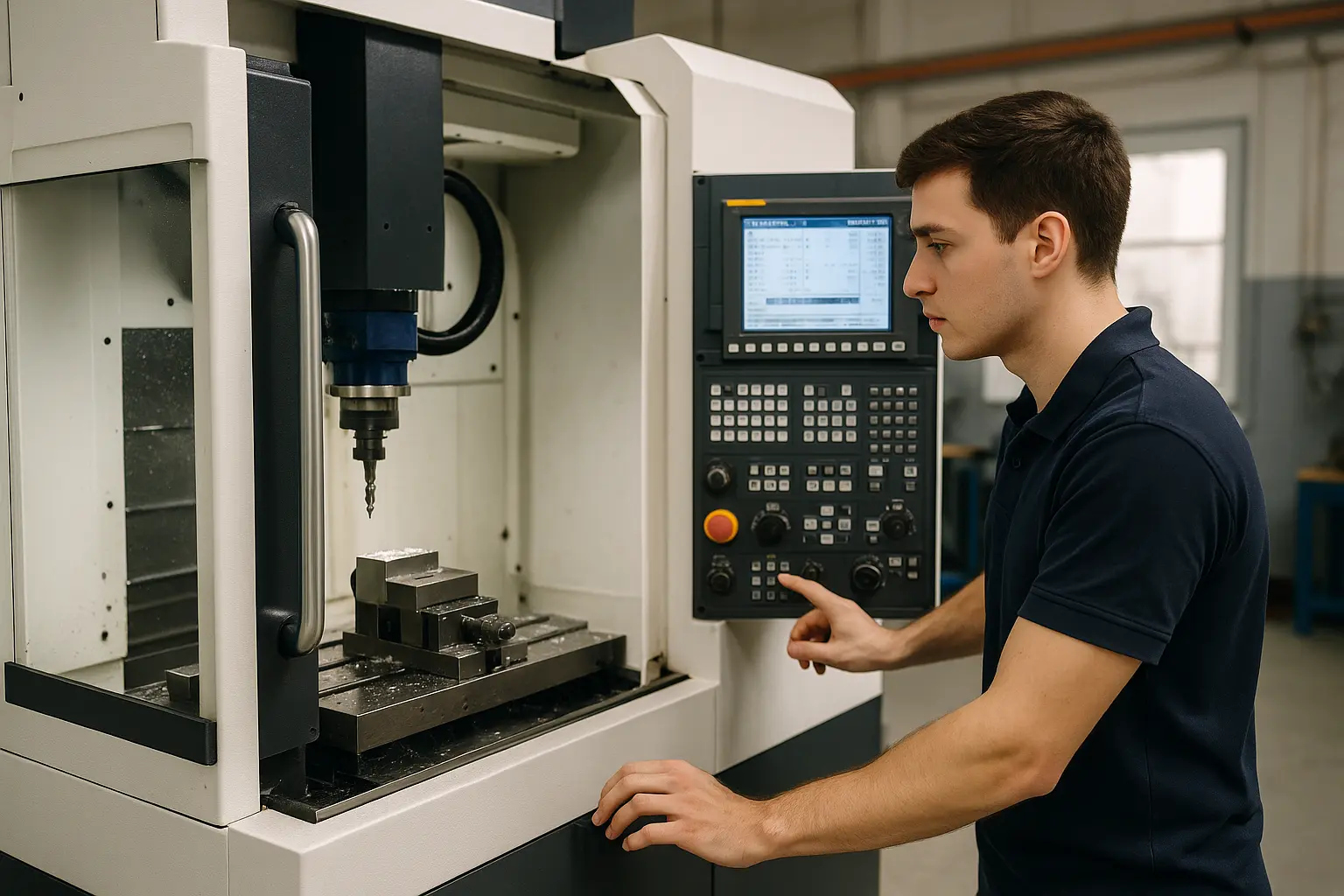Have you ever heard someone talk about “CNC operators” and wondered what they actually do? Maybe you’re curious about a career switch, or you just want to understand how parts are made with such accuracy. You might be asking yourself, “what Is a CNC operator?” and why are they so important?
Short Answer: A CNC operator is a person who sets up and runs computer-controlled machines that cut, drill, or shape materials. They:
- Load raw materials
- Install and configure cutting tools
- Run CNC programs
- Check the finished parts’ quality
- Maintain the machines
In this article, we’ll explore “what Is a CNC operator?” in depth. We’ll go through their main duties—from preparing machines to inspecting products—and show you how they help factories produce high-quality parts efficiently and safely.
What Is a CNC Operator? Quick Facts
When you wonder, “what Is a CNC operator?” think of a skilled pro who uses computer-guided machines to craft precise parts from metal, plastic, or wood. They’re detail-oriented workers who interpret designs, set up machines, run programs, and inspect finished pieces—all to meet exact measurements and standards.
Tool Installation and Customization
They also install specialized cutting tools, drills, and milling attachments. Different tasks might call for different tools—some for drilling holes, others for slicing or carving shapes. By swapping out tools, operators adapt the machine to each part’s specific design needs.
Program Execution and Monitoring
After setup, CNC operators run computer programs designed to control the machine’s movements. These programs guide each cut, ensuring precision. Operators watch the process closely, pausing or adjusting settings if anything seems off, such as incorrect dimensions or tool wear.
Setting Up The Machine

Machine setup is one of the first things that come to mind when asking, “what Is a CNC operator?” If the setup isn’t done right, the rest of the production process will suffer. That’s why operators spend extra time aligning materials and making sure tools are installed perfectly.
Loading Raw Materials
- Operators place the stock material—metal rods, plastic sheets, or blocks of wood—into the CNC machine’s workspace.
- A secure clamp or vise locks the material in place, preventing movement mid-cut.
Configuring The Tools And Parameters
- Next, they attach cutting tools to the machine’s spindle.
- Each project often requires different speeds, feeds, or depth settings. By adjusting parameters on the CNC control panel, operators tailor the machine’s actions to the specific job.
Typical Materials Used In CNC
- Aluminum for lightweight parts
- Steel for tough, durable items
- Plastics (like ABS) for prototypes or electrical enclosures
- Wood for custom furniture or artistic pieces
Machine setup might take a while, but it’s crucial to get it right. A small error at this stage can lead to mismatched parts, wasted material, or even a damaged machine later on.
Running CNC Programs
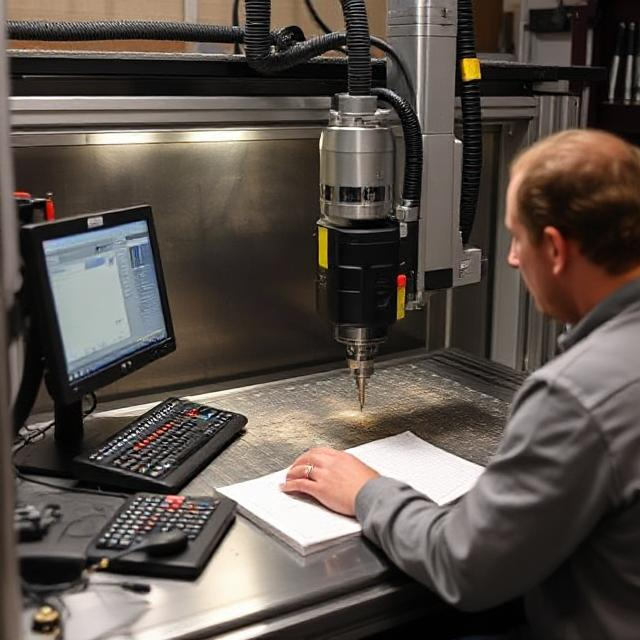
Once the machine is ready, it’s time to bring the digital side into the picture. A CNC operator loads a pre-written program—often a G-code file—into the machine’s computer. This program tells the machine how to move: which path to follow, how fast to spin the cutting tool, and how deep to cut.
Interpreting Blueprints And Drawings
Before pressing start, the operator reads technical drawings to confirm everything makes sense. If the blueprint says, “drill a 10 mm hole here,” the program must do exactly that. Any mismatch between the blueprint and the code can lead to scrap parts.
Monitoring Machine Operation
During the run, operators don’t just sit back. They keep a close eye on the machine’s performance. Are there strange vibrations? Is the cutting tool showing signs of wear? If something’s off, the operator adjusts feed rates or updates the program mid-process.
Quick Tip: Stay aware of unusual sounds or tool chatter. Early detection can save you from a batch of flawed parts and prevent damage to expensive tooling.
Even after the part is made, the operator might run a quick test piece just to ensure everything matches the specs. If corrections are needed, they’re made at this stage before full production continues.
Quality Control And Inspection
Quality control is another critical piece of the puzzle when answering, “what Is a CNC operator?” Without accurate measurement and inspection, there’s no guarantee that the parts will meet customer expectations or fit together as intended.
Checking Dimensions And Tolerances
Operators use precision tools like calipers, micrometers, or coordinate measuring machines (CMMs) to confirm the part’s dimensions are within specified tolerances. For instance, if a drawing says a part must be 50.00 mm in diameter (±0.02 mm), the operator checks it thoroughly.
Identifying Defects
Sometimes, even well-set machines produce parts with minor flaws—like burrs, surface scratches, or inconsistent hole sizes. CNC operators spot these issues quickly. If a recurring defect appears, they pause production to diagnose the problem, perhaps adjusting the cutting depth or replacing a dull tool.
Common Measurement Tools
- Caliper: Measures internal and external dimensions accurately.
- Micrometer: Excellent for very tight tolerances.
- Dial Gauge: Checks alignment and runout on rotating parts.
If parts pass inspection, they’re moved on to the next stage—whether that’s packaging, assembly, or further processing. If they fail, the operator refines machine settings or updates the program to fix the issue.
Machine Maintenance And Troubleshooting
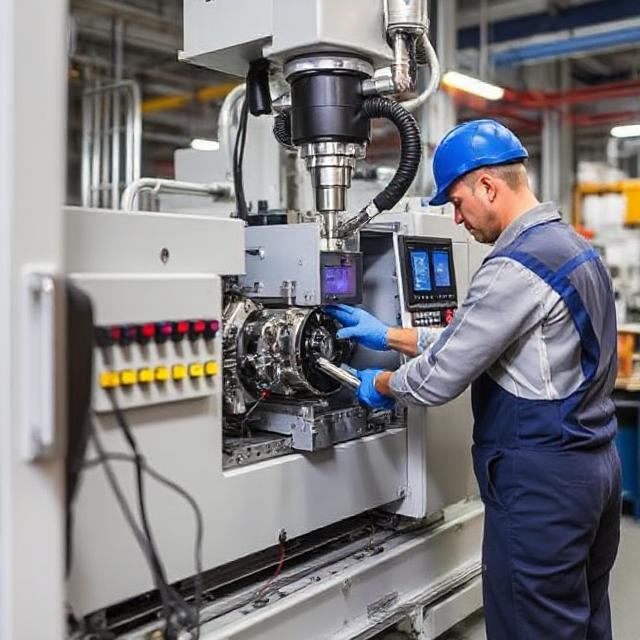
Next on our journey to discover “what Is a CNC operator?” is the realm of maintenance. Machines don’t run smoothly forever—tools wear out, motors get dirty, and software can glitch. A CNC operator must keep everything in top shape.
Routine Maintenance
Daily, weekly, or monthly tasks might include:
- Cleaning and lubricating moving parts
- Checking coolant levels
- Inspecting belts or pulleys for wear
- Replacing worn cutting tools
Ignoring these chores can lead to subpar parts and even machine breakdowns. Regular upkeep keeps the production line humming along without costly interruptions.
Handling Malfunctions
Here’s your paragraph with the keyword “What Is a CNC Operator” included twice:
No machine is perfect. Occasionally, an alarm might flash, or the cutting tool might jam mid-operation. In such cases, an operator’s troubleshooting skills come into play. What Is a CNC Operator? It’s a skilled professional who ensures the smooth functioning of CNC machines by diagnosing issues and making necessary adjustments. They might consult error logs, examine the part for clues, or re-check the program code.
Warnings
Always power down the machine before attempting repairs or removing jammed parts. Safety should be your top priority.
If an issue is beyond the operator’s expertise, they alert a maintenance technician or engineer. However, What Is a CNC Operator capable of? A great CNC operator can handle many smaller fixes themselves, saving time and resources.
Let me know if you need any refinements! 😊
Safety And Documentation
Safety is the final but most important aspect of “what Is a CNC operator?” We can’t forget that these machines involve sharp cutting tools, rotating spindles, and high voltage. CNC operators follow strict guidelines to protect themselves and those around them.
Personal Protective Equipment (PPE)
Operators often wear safety glasses or a face shield to guard against flying chips. Hearing protection is common in noisy environments. Gloves can be tricky—sometimes helpful for handling rough materials, but also a hazard if they get caught in rotating parts. The right type of footwear—often steel-toe shoes—protects from heavy materials dropping on feet.
Work Area Organization
A cluttered workspace invites accidents. Good operators keep floors clear of debris or spilled coolant, store tools neatly, and ensure the machine’s protective guards are in place. They also remain vigilant, ready to hit the emergency stop if something unexpected happens.
Documentation Duties
- Operators record production data, like the number of parts produced and any defects found.
- They also document any changes to the machine settings or program code so the next shift can pick up without confusion.
Finally, thorough documentation keeps track of all adjustments made during a shift, providing a clear history if anything goes wrong or a part fails inspection later.
Conclusion
Here’s your paragraph with the keyword “What Is a CNC Operator” included twice:
So, what is a CNC operator? They’re detail-focused professionals who handle everything from loading raw materials and running specialized machine programs to inspecting finished parts and maintaining the equipment. By reading blueprints carefully, ensuring correct tool setups, monitoring quality, and logging their processes, what is a CNC operator responsible for? They help factories deliver precision parts efficiently and safely.
Let me know if you need any further refinements! 😊
In essence, these skilled operators ensure that computer-driven machines stay accurate, productive, and safe—all while turning out the high-quality parts we depend on in countless products, from cars to phones and beyond.
FAQs
Is a CNC operator the same as a CNC programmer?
Not exactly. A CNC programmer writes the machine’s instructions (G-code). The operator often loads this code, sets up the machine, and oversees production. Sometimes, one person does both roles, but they are distinct jobs.
Do I need a college degree to become a CNC operator?
Many operators learn through vocational schools or on-the-job training. A degree isn’t always required, but familiarity with machine tools, math, and blueprint reading is crucial.
What industries hire CNC operators?
You’ll find CNC operators in automotive, aerospace, medical device manufacturing, and many other sectors that need precision parts.
How does a CNC operator handle mistakes?
If parts come out wrong, the operator checks the program, machine alignment, or cutting tools. They adjust settings or replace worn components to fix the issue. Ongoing documentation helps pinpoint the root cause.
What does a typical workday look like for a CNC operator?
It includes reviewing job orders, setting up machines, running programs, inspecting parts for quality, and performing routine machine maintenance. They also communicate with supervisors or quality control staff if any issues arise.

